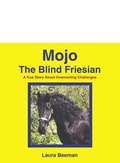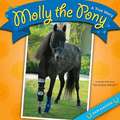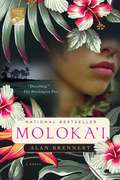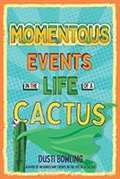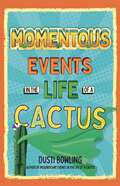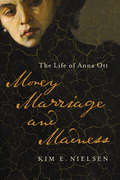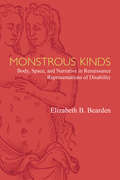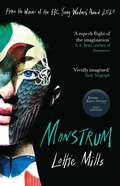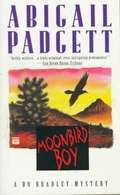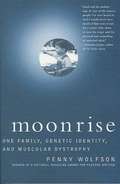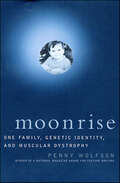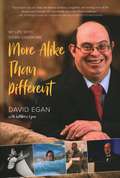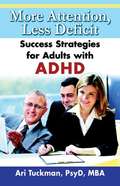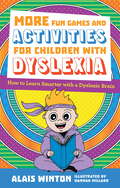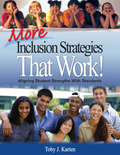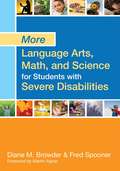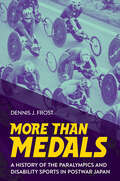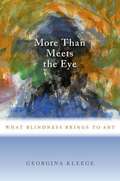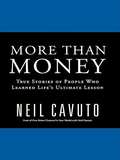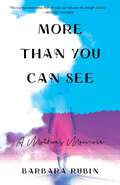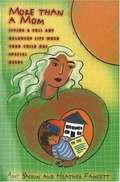- Table View
- List View
Mojo The Blind Friesian
by Laura BeemanThis is the true story of Mojo a blind friesian horse who overcame many obsticles to become a member of a quadrille. He used his other senses to move around his environment.
Molly The Pony: A True Story
by Pam KasterMolly the pony waits. She waits in her stall. She waits during the storm. She waits for her owner to return. So begins the true story of a patient pony who is rescued from a south Louisiana barn after Hurricane Katrina and finds a new life on a farm with new animal friends. But Molly's tale of courage does not end here. When a dog on the farm attacks Molly, her front leg is badly injured. For a pony, a damaged leg is life threatening. To the amazement of veterinarians, though, Molly rises to her new challenge. She undergoes a rare surgery for horses: amputation of her front leg. Now fitted with a prosthetic limb, Molly relearns how to walk and embarks again on a new mission in life: making new people friends. This plucky pony's story of survival and friendship will win the hearts of readers young and old. All who have had to start over after displacement, abandonment, injury, or amputation will find a friend in Molly as they follow her story of bringing a smile to everyone she meets.
Moloka'i
by Alan BrennertRachel Kalama, a spirited seven-year-old Hawaiian girl, dreams of visiting far-off lands like her father, a merchant seaman. Then one day a rose-colored mark appears on her skin, and those dreams are stolen from her. Taken from her home and family, Rachel is sent to Kalaupapa, the quarantined leprosy settlement on the island of Moloka'i. Here her life is supposed to end---but instead she discovers it is only just beginning. With a vibrant cast of vividly realized characters, Moloka'i is the true-to-life chronicle of a people who embraced life in the face of death.
Mom Can't See Me
by Sally Hobart AlexanderNine-year-old Leslie tells how her mom does everyday tasks while being blind, from keeping track of her daughter at nursery school to going to soccer games, to the movies, and canoeing.
Mom, I'm All Right
by Kathleen SandeferThe mother of a fourteen-year-old suicide victim tells her heartrending story and offers advice and warnings to parents of teenagers. Not only is this book for parents or relatives who have experienced the agony of a teen suicide but also for every teacher, principal, pastor, Sunday School teacher, counselor anyone who works in any way with children from elementary school through high school. This book is a reading MUST for every parent who has a child on some type of long term prescribed medication for hyperactivity or any type learning disability, no matter how minor or severe. What the doctors DON'T (or WON'T) tell you is revealed in this shocking account.
Momentous Events in the Life of a Cactus (Life Of A Cactus #2)
by Dusti BowlingJust as Aven starts to feel comfortable in Stagecoach Pass, with her friends and schoolmates accustomed to her lack of "armage," everything changes once again. She's about to begin high school with 3,000 new kids to stare at her. And no matter how much Aven tries to play it cool, nothing prepares her for the reality.
Momentous Events in the Life of a Cactus (Life of a Cactus #2)
by Dusti Bowling&“High School. Two words that struck fear into the heart of every armless middle schooler I knew. Which was me. And like two people online.&” The sequel to the critically acclaimed Insignificant Events in the Life of a Cactus follows Aven Green as she confronts yet another challenge: high school.&“Those preparing to &‘slay the sucktastic beast known as high school&’ will particularly appreciate this spirited read.&” —Kirkus (Starred review) Just as Aven starts to feel comfortable in Stagecoach Pass, with her friends and schoolmates accustomed to her lack of &“armage,&” everything changes once again. She&’s about to begin high school . . . with 3,000 new kids to stare at her. And no matter how much Aven tries to play it cool, nothing prepares her for the reality. In a year filled with confusion, humiliation, and just maybe love, can Aven manage to stay true to herself?
Money, Marriage, and Madness: The Life of Anna Ott (Disability Histories)
by Kim E. NielsenAnna Ott died in the Wisconsin State Hospital for the Insane in 1893. She had enjoyed status and financial success first as a physician's wife and then as the only female doctor in Madison. Throughout her first marriage, attempts to divorce her abusive second husband, and twenty years of institutionalization, Ott determinedly shaped her own life. Kim E. Nielsen explores a life at once irregular and unexceptional. Historical and institutional structures, like her whiteness and laws that liberalized divorce and women's ability to control their property, opened up uncommon possibilities for Ott. Other structures, from domestic violence in the home to rampant sexism and ableism outside of it, remained a part of even affluent women's lives. Money, Marriage, and Madness tells a forgotten story of how the legal and medical cultures of the time shaped one woman—and what her life tells us about power and society in nineteenth century America.
Monica Plum's Horrid Problem: A Story For Children Of Troubled Parents (Helping Children with Feelings)
by Margot Sunderland Nicky ArmstrongThis is a story for children with troubled parents. Monica has a horrid problem. It gets everywhere: into her schoolwork, her dreams, and her ability to make friends. People keep telling her to cheer up. She can't. She feels as if she is carrying around some very heavy luggage. Then one day, a helpful teacher sees how miserable Monica is, and tells her about the knights in the world, who are posing as people. In a whispering wood, Monica finds some of these knights. They teach her how to make her problem far less horrid. In particular they show her how to cope when other people's problems weigh you down and make you feel miserable. Most importantly they show her how to do life well. Monica leaves whispering wood feeling empowered and ready to face what she could not face before.
Monstrous Kinds: Body, Space, and Narrative in Renaissance Representations of Disability (Corporealities: Discourses Of Disability)
by Elizabeth BeardenMonstrous Kinds is the first book to explore textual representations of disability in the global Renaissance. Elizabeth B. Bearden contends that monstrosity, as a precursor to modern concepts of disability, has much to teach about our tendency to inscribe disability with meaning. Understanding how early modern writers approached disability not only provides more accurate genealogies of disability, but also helps nuance current aesthetic and theoretical disability formulations. The book analyzes the cultural valences of early modern disability across a broad national and chronological span, attending to the specific bodily, spatial, and aesthetic systems that contributed to early modern literary representations of disability. The cross section of texts (including conduct books and treatises, travel writing and wonder books) is comparative, putting canonical European authors such as Castiglione into dialogue with transatlantic and Anglo-Ottoman literary exchange. Bearden questions grand narratives that convey a progression of disability from supernatural marvel to medical specimen, suggesting that, instead, these categories coexist and intersect.
Monstrum: Longlisted for the 2025 Dylan Thomas Prize
by Lottie Mills* From the winner of the BBC Young Writers' Award 2020 * What does it mean to be different in a world that values perfection, at any cost? 'Lottie's writing is a superb flight of the imagination' A.S. Byatt, author of Possession 'Haunting, luridly beautiful, and at times shockingly, deliciously gruesome&’ Jenn Ashworth, author of Ghosted A 'Best Book for May 2024' according to Cosmopolitan From Lottie Mills, the winner of the BBC Young Writers' Award in 2020, comes this beautifully crafted collection of stories. A father and daughter build a life for themselves on an isolated beach. But the outside world is pressing in. It's only a matter of time before their secret refuge is discovered. A young disabled woman opts to receive a perfect, pain-free body. Soon, however, she finds herself haunted by the one she cast off. A travelling circus master discovers the ideal addition to his cabinet of curiosities: 'damaged', 'grotesque', gifted. He plans to make her the star of his show; she plans to take her revenge. Monstrum captures the experience of characters excluded by a society that cannot accept their difference. Eerie, fantastical and hugely ambitious, this collection announces the arrival of an outstanding new literary voice. 'Lottie's stories reminded me of what matters' Claire Oshetsky 'Magical and haunting' Jan Carson
Moonbird Boy
by Abigail PadgettWhile battling her own depressive cycle after her old dog dies, Bo stays in a sub-acute facility out on the Kumeyaay reservation. The facility is run by Indians who specialize in this care. While there, Bo meets and become friends with a schizophrenic young man waiting for his meds to stabilize. He is murdered, but his young son, known as Moonbird is still there. Bo leaves the facility and steps back into her CPS investigative role and becomes involved with murders, the Indian culture, medical mega-business and plots within plots. As usual, just when you think you have it figured out, Padgett surprised you again. Many of the prior characters from the series are not present here. However, Estrella is now pregnant, and there is the continuation of the relationship between Bo and Dr. Andrew LaMarche.
Moonrise: One Family, Genetic Identity, and Muscular Dystrophy
by Penny WolfsonIn this riveting and thought-provoking memoir about her family, her son Ansel, and his progressive disability, Penny Wolfson embarks on a quest that explores special education, giftedness, prenatal testing, and the genes she shares with her mother, sisters, and son. While Moonrise is an eloquent narrative of one family, it also asks profound questions about our genetic selves.
Moonrise: One Family, Genetic Identity, and Muscular Dystrophy
by Penny WolfsonMoonrise is Penny Wolfson's first-person account of her family, her son Ansel, and his progressive disability, caused by the genetic disease Duchenne muscular dystrophy. The journey begins when he is born and deemed a particularly beautiful and magical baby, continues with the alarming possibility, at the age of two, of "wrongness," takes us through the diagnosis of disease and prognosis of early death, and brings us to his adolescence, where his parents are never sure if the moon is rising or setting over his life. As she traces her son's development and the impact of his disability on her worldview, she embarks on a quest to understand scientific advances and their implications. (The gene was isolated at approximately the time Ansel was diagnosed.) She also explores special education, giftedness, prenatal testing, and the genetic links she shares with her mother, sisters, and son. Questions about the disease-causing mutation persist: What does knowledge of the self on a molecular level mean? Is genetic self-knowledge our goal now, much as knowledge of the psyche was in the last century? Moonrise is an essential contribution to the dialogue about genetics, as well as a deeply human story about a remarkable child and his family.
More Alike than Different: My life with Down Syndrome
by David EganIn this inspiring memoir, David Egan tells his own story, authentically describing a life of maximizing his abilities, as he advocates for himself and for all other people with disabilities. This book is yet another first in a life that has seen many firsts, a life buoyed by an optimistic perspective that refuses to be limited by stereotypes and the low expectations of others.
More Attention, Less Deficit: Success Strategies for Adults with ADHD
by Ari TuckmanThis essential guidebook begins by describing how the ADHD brain processes information and how that leads to typical challenges that people with ADHD experience, as well as why certain strategies are effective and others aren't. The book provides an extensive collection of practical strategies to overcome common struggles in the areas of self-esteem, work, relationships, friendships, parenting, and everyday life. It covers everything from time management to getting organized.
More Fun Games and Activities for Children with Dyslexia: How to Learn Smarter with a Dyslexic Brain (Fun Games and Activities for Children with Dyslexia)
by Alais WintonDyslexic teacher Alais Winton is back with all-new games and activities to make learning simple and fun.This inventive and practical workbook is packed with tried-and-tested games and activities to help children aged 7-13 who have dyslexia. It is ideally suited to home-schooling, independent learning, or classroom or small group setting, and includes activities such as The Multiply Matrix Game, Drop the Ball and Number Tag.The book is packed with cartoons, and there's a quiz at the start to help you discover whether you learn best from pictures, movement, socially or through music. You can use this book to find the strategies and activities you enjoy the most, and that support you to learn most effectively. If you have ideas about how you would like to add to the games or invent your own, go for it!With even more engaging activities and updated advice for parents and carers, this is another essential tool for making learning simple and enjoyable.
More Inclusion Strategies That Work!: Aligning Student Strengths With Standards
by Toby J. KartenProvides research-based strategies for identifying and meeting the needs of students with disabilities, links best inclusive practices with content-specific curriculum, and helps educators fulfill IDEA 2004 requirements.
More Language Arts, Math, and Science for Students with Severe Disabilities
by Fred Spooner Diane BrowderA followup to the landmark bestseller Teaching Language Arts, Math, and Science to Students with Significant Cognitive Disabilities, this important text prepares teachers to ensure more inclusion, more advanced academic content, and more meaningful learning for their students.
More Than Medals: A History of the Paralympics and Disability Sports in Postwar Japan
by Dennis J. FrostHow does a small provincial city in southern Japan become the site of a world-famous wheelchair marathon that has been attracting the best international athletes since 1981?In More Than Medals, Dennis J. Frost answers this question and addresses the histories of individuals, institutions, and events—the 1964 Paralympics, the FESPIC Games, the Ōita International Wheelchair Marathon, the Nagano Winter Paralympics, and the 2021 Tokyo Summer Games that played important roles in the development of disability sports in Japan. Sporting events in the postwar era, Frost shows, have repeatedly served as forums for addressing the concerns of individuals with disabilities. More Than Medals provides new insights on the cultural and historical nature of disability and demonstrates how sporting events have challenged some stigmas associated with disability, while reinforcing or generating others.Frost analyzes institutional materials and uses close readings of media, biographical sources, and interviews with Japanese athletes to highlight the profound—though often ambiguous—ways in which sports have shaped how postwar Japan has perceived and addressed disability. His novel approach highlights the importance of the Paralympics and the impact that disability sports have had on Japanese society.
More Than Meets the Eye
by Derek Gill Joan BrockJoan Brock was a teacher at an Iowa school for the blind when her life was nearly prefect. Then tragedy struck not once but twice. Most people would have wallowed in self pity and asked "Why me?" This courageous woman decided to face her challenges and ask "Why not me?" Her story is to say the very least inspirational.
More Than Meets the Eye: What Blindness Brings to Art
by Georgina KleegeIn the quarter century following the enactment of the Americans with Disabilities Act, art museums, along with other public institutions, were tasked with making their facilities and collections more accessible to people with disabilities. Although blind and other disabled people have become marginally more visible in recent years, the vast majority of blind Americans remain undereducated and unemployed. In More Than Meets the Eye, Georgina Kleege shows how the scrutiny of one cultural issue-access to arts institutions-in relation to one subset of the disabled population- blind people-can lead us to larger and more general implications. <p><p> Kleege begins by examining representations of blindness, arguing that traditional theories of blindness often fail to take into account the presence of other senses, or the ability of blind people to draw analogies from non-visual experience to develop concepts about visual phenomena. Following this, the book shifts its focus from the tactile to the verbal, describing Denis Diderot's remarkable range of techniques to describe art works for readers who were not able to view them. Diderot's writing not only provided a model for describing art, Kleege says, but proof that the experience of art is inextricably tied to language and thus not entirely dependent on sight. <p> By intertwining her personal experience with scientific study and historical literary analysis, Kleege challenges traditional conceptions of blindness and overturns the assumption that the ideal art viewer must have perfect vision. More Than Meets the Eye seeks to establish a dialogue between blind people and the philosophers, scientists, and educators that study blindness, in order to create new aesthetic possibilities and a more genuinely inclusive society.
More Than Money
by Neil Cavuto: True Stories of People Who Learned Life's Ultimate Lesson Author profiles the many business heroes who inspired him to continue his career through his battles with cancer and multiple sclerosis.
More Than You Can See: A Mother's Memoir
by Barbara RubinAt seventeen, Barbara&’s daughter Jennifer is in a horrific car accident and sustains a traumatic brain injury that sends her into a two-week coma. Once she awakens, a unique disability presents itself: Jenn lacks any traditional method of communication. Unable to speak or function on her own, Jenn must relearn basic life skills in a rehabilitation facility while Barbara and her family struggle to piece together their lives, now forever changed.When it becomes clear that Barbara and her husband cannot care for Jenn on their own, they move her to a group home. Over time, three creative, lighthearted women become Jenn&’s caregivers, and with their support Jenn reenters the community and experiences travel and adventure, all while capturing the hearts of those around her with her engaging and quirky personality.Despite her disability, Jenn connects with everyone in her life. And Barbara ultimately realizes that Jenn&’s lack of language doesn&’t stop her from having a voice. A touching memoir that strikes a delicate balance between sorrow and joy, heartbreak and triumph, More Than You Can See is Barbara&’s story of moving beyond tragedy and discovering profound and fulfilling life lessons waiting for her on the other side.
More Than a Mom: Living a Full and Balanced Life When Your Child Has Special Needs
by Amy Baskin Heather FawcettSolid, practical advice on how to cope with the many personal challenges mothers of children with disabilities face at home, at work, and within themselves. A "how to" guide for living a balanced, fulfilling life with advice from moms who have been there -- this includes the authors' experiences and insights, and tips from dozens of other moms of kids with special needs who filled out the authors' questionnaire. Jam-packed with useful steps you can take to make your life more manageable, and ultimately more fulfilling. The book addresses 2 main concerns: Taking Care of Yourself (at home physically, emotionally, practically, spiritually/psychically); Taking Care of Business. Target Audience: Mothers of children with developmental disabilities (e.g., Down syndrome, autism, cerebral palsy, etc.) or chronic health concerns.
